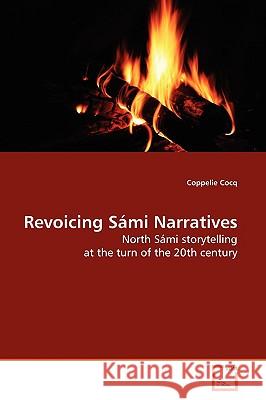Revoicing Sámi Narratives » książka
Revoicing Sámi Narratives
ISBN-13: 9783639145281 / Angielski / Miękka / 2009 / 260 str.
This book investigates the relationship between storytellers, contexts and collective tradition, based on an analysis of North Sami narratives published in the early 1900s. This study serves as an act of "revoicing," of recovering voices that had been silenced by the scientific discourse which enveloped their passage into print. It highlights the dynamic and conscious choices of narrative strategies made by these storytellers and the implications of the discourses expressed in narration. The analysis demonstrates that storytelling is an elaboration that takes place in negotiation with tradition, genres and individual preferences. The repertoires of four storytellers are studied according to a critical discourse analysis from a folkloristic perspective. Based on a receptionalist approach, this book investigates the implications of these narratives for the North Sami community at the turn of the 20th century. Storytelling appears to have had a set of functions for community members, from the normative as regards socialization, information and warning against dangers to the defensive with the elaboration of a discourse about solidarity, identity and empowerment."
This book investigates the relationship betweenstorytellers, contexts and collective tradition,based on an analysis of North Sámi narrativespublished in the early 1900s. This study serves as anact of "revoicing," of recovering voices that hadbeen silenced by the scientific discourse whichenveloped their passage into print. It highlights thedynamic and conscious choices of narrative strategiesmade by these storytellers and the implications ofthe discourses expressed in narration. The analysisdemonstrates that storytelling is an elaboration thattakes place in negotiation with tradition, genres andindividual preferences.The repertoires of four storytellers are studiedaccording to a critical discourse analysis from afolkloristic perspective. Based on a receptionalistapproach, this book investigates the implications ofthese narratives for the North Sámi community at theturn of the 20th century.Storytelling appears to have had a set of functionsfor community members, from the normative as regardssocialization, information and warning againstdangers to the defensive with the elaboration of adiscourse about solidarity, identity and empowerment.











